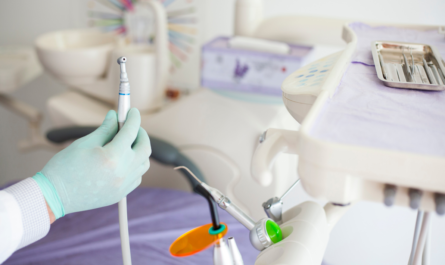By Dr. Sami Bahri, DDS
Editor’s note: The following is part two in a series on how group practices can eliminate waste.
Symptoms that indicate you’re wasting money
The economy goes up and down, but for group practices, one goal doesn’t change: the organization needs to stay profitable. In this article we present one way to take control of your profit that has proven effective for the last 70 years – the “Lean” way.
Production, volume and cost
Profit depends on three factors: Production, volume and cost. In a previous article we have submitted this formula:
Profit = (Fee – Cost) x Volume
As dentists, we are used to the term “Production.” We can get to it if we expand the formula:
Profit = (Fee x Volume) – (Cost x Volume)
Where Fee x volume = Production and Cost x Volume = Total Cost
To increase profit, we can do any combination of increasing volume and fees or reducing costs. Among the many combinations, a single focus on reducing cost has proven most effective and sustainable, especially in low growth economic times.
How to reduce cost? By eliminating wasteful activities, and converting the time savings into value creating work that patients are willing to pay for. Luckily, we have numerous opportunities for improvement. Even if we have established sound management systems, people who execute them spend only 20 percent of their time on value creating work, and the remaining 80 percent on necessary but non-value creating activities. To help you detect those wasteful activities, we have listed seven categories of waste in a previous article and explored the first two, defects and waiting.
In this article, we will explore the five remaining categories – overproduction, transport, motion, inventory, excessive processing.
Overproduction
Overproduction focuses essentially on quantity, timing and speed. If those do not match patient demand, even if you’re doing the right activity, you’d be wasting a lot of resources – and that happens most of the time.
Overproduction is the waste of making too much, too fast or too soon. It is the opposite of Just-In-Time (JIT,) a production system that seeks to spend the exact amount of resources and time necessary to perform a task at its highest quality levels.
Overproduction is the hardest waste to see because you’d be performing normal activities that are necessary for patient treatment, but in larger quantities than needed, too soon or too fast. To know the best timing you need planning and calculation; as you learn Just-In-Time practices, you would be able to reduce overproduction gradually.
In dentistry, the most relevant aspect of overproduction is timing. Interestingly, we generate more waste if we produce too early, than too late. When producing what’s needed for tomorrow, we’re not available to work on what’s needed now; and that is considered to be the worst of all wastes.
To understand why timing can be wasteful, you can think of any situation where you need an assistant but she’s busy preparing something that will be needed later:
- The insurance coordinator is not available to explain benefits to a patient because she’s on the phone with the insurance company, verifying benefits for next week’s patients.
- The assistant is not handing you the anesthetic syringe because she’s placing a block in the CAD-CAM milling machine or ordering implant parts for a patient scheduled a week after the parts are expected to arrive or setting up the room for a patient coming in two hours – she’s working many steps ahead thus not available for the present step.
To eliminate overproduction, you need to establish controls in your systems that prevent people from performing tasks too early.
Transport
Transport refers to the waste of moving patients, equipment and materials.
Transport as a waste is a direct consequence of the division of labor pioneered by Adam Smith around 1770, a philosophy that led to improving productivity through the creation of specialties; but also generated the waste of transport.
The waste of transport is everywhere:
- Patients visit the hygiene room, the operative room, the consultation room, the front desk, and the waiting room. Moving patients is wasteful because it requires cleaning more rooms than necessary and because it takes longer to move patients than to move providers. We recommend that all team members – dentists, hygienists, insurance coordinator, treatment plan coordinator and others – come to the patient to provide services. In our office, patients would leave the room only for a panoramic radiograph.
- We transport instruments back and forth between the sterilization area and the treatment room. We move supplies from the storage room to the treatment rooms. We move expensive machines like a Laser, a Cad-Cam, a laboratory engine, an electro surge, an X-ray sensor, a photography camera, and intra oral camera. Transport is everywhere, but patients would not pay you any extra fee for it.
To reduce the effect of transport, lean gathers all the functions in one space, close to where the work is being done. The office layout and the location of supplies are crucial in reducing the waste arising from transport.
Motion
While transport refers to relocating patients, equipment and supplies, the waste of motion refers to movement by workers. Dentistry has skillfully used ergonomics to reduce excessive motion. In fact, our profession might well be the best organized of all healthcare professions.
Just like transport, motion is caused in part by the division of labor, the ensuing facility layout and the location of supplies.
One manager at Medtronic in Jacksonville, Fla., used pedometers and found that the plant’s employees walked in a year an accumulated distance equal to a tour around the world. Needless to say that the waste of motion became the main target.
How far do people walk in your office? You could try to draw a “Spaghetti Diagram” – where you trace the movements of different employees on the office layout map. Chances are you will find opportunities to reduce walking.
Inventory
The first thing that comes to mind when we think about inventory is dental supplies. The more supplies you have at one time, the more time someone will spend managing them; and that is not value creating work. The same goes for laboratory cases.
But we have an important lesson to learn from manufacturers; they consider excessive inventory any unfinished goods – “Work in Process” (WIP). WIP utilizes resources and ties up capital until it is finished and sold. The same reasoning applies to dentistry; our WIP is unfinished treatment plans.
As long as they have unfinished treatment, patients would utilize resources. They will call to ask about any kind of information, to report errors or even to compliment the staff on the quality of the service. They will come back for adjustments, fallen or broken temporary restorations. All of that prevents the staff from helping in value creating activities; the sooner the patient moves to the hygiene cycle, the less cost we will incur.
To reduce WIP, we treat as much as the patient allows in one visit; the whole treatment, if possible. You will not have to make new appointments, greet, prepare the room, anesthetize, collect, file insurance, sterilize instruments, etc. If you cut the number of appointments by even a small percentage, let’s say 10 percent, you would still eliminate a considerable number of steps and free up staff time for productive work.
Overprocessing
The definition for overprocessing is simply processing beyond the customers demand. The most common form we see is talking to the patient more than their treatment requires.
Just as in any other waste, when you overprocess the large steps – as when you continue explaining a treatment after the patient has understood and agreed on it – you can certainly cause some waste, but you generate more waste when you do it in small, repetitive steps. As an example, rinsing and drying a tooth is an act that is repeated a large number of times over the professional career of an assistant. If she spends 10 seconds on it instead of five, the accumulated effect can be detrimental to the overall productivity.
We have explored the seven types of deadly wastes in any business. We hope that you spend more time learning how to eradicate them so you can increase profit. But as we said in the first article, those are symptoms of underlying diseases that you need to learn how to diagnose and cure. If you have any comments or questions please email me at [email protected]





